Dealing with bullies is an unfortunate reality faced by 1 in 7 students grade K – 12 nationwide. Bullying is at epidemic proportions in this country, and millions of children and youth face similar situations every day in school. Together, we can put an end to this behavior.
Just like youth weren’t born knowing the alphabet, no one is born equipped to handle bullies alone. That’s why YMCA of Silicon Valley’s Project Cornerstone strives to empower youth with the skills they need to stop bullying and create an inclusive and compassionate culture.
Anne Ehresman, Executive Director of YMCA of Silicon Valley Project Cornerstone shares, “Our hope is that by teaching youth positive values, and giving them the tools to support one another, that bullying behavior becomes less prevalent in the community. We can create a safe and supportive culture when we teach youth how to prevent and address bullying behavior and equip adults to respond appropriately.”
Whether it’s you, your friend, your child, or a student who’s being bullied, be prepared to stand up to bullying, be
it online or in person. Here are some tips and techniques for bullying prevention, easily remembered as the ABC’s.
The ABC’s of bullying prevention:
A – Adult
The single most effective way to stop a bullying situation is to get an adult involved. When it comes to bullying, there is no such thing as tattling. Confiding in a trained adult, like teachers or counselors, is the best way to stay safe and put an end to bullying.
** Adults, learn how to help when youth confide in you.
B –Body Language
Bullies tend to look for victims who don’t have a lot of self-confidence. Fake it until you make it by standing up straight, making direct eye contact, and walking with shoulders back, to deter bullies from choosing you as a target.
C – Comebacks
A creative verbal comeback can help diffuse a bullying situation. The following types of comebacks can help depending on the specific situation.
- Pretend to agree. Rather than arguing back if a bully says something rude like, “You stink!” try agreeing to confuse them, saying, “Stinking is my specialty!”
- Be honest. If the bully says, “Hey, you have really ugly clothes!” Try telling them the truth, saying, “Wow! This is my favorite outfit. Sorry you don’t like it!”
- Use humor. If the bully asks, “When was the last time you washed your hair – its nasty!” Respond comically, “Hmmm… I think it was when George Washington was the president of the United States. When was that, 1776?”
- Be direct. Calmly look the bully in the eye and express that you are done being bullied, “I’m tired of this and I’m not going to take it anymore.”
D – Draw Attention
In a threatening or unsafe situation, use your voice to let other people know you need help. Loudly yell things like, “Stop that now!” or “Leave me alone!” Whatever you shout, what matters most is using a loud volume.
E – Evade
The best fight is the one never fought. Avoid bullying encounters by walking away, sticking with friends, or standing near a trusted adult.
F – Friends
There is safety in numbers. Sticking with friends and people you trust to be UPstanders, someone who will do the right thing, will discourage a bully from choosing you as a target.
If you or someone you know uses these techniques and bullying persists, speak up and take action.
Even if you aren’t the one being bullied, you have a responsibility to take action. Six out of 10 teenagers say they witness bullying in school once a day, meaning that those 6 people have the ability to help stop bullying in its tracks. When bystanders intervene, becoming UPstanders, bullying stops within 10 seconds 57% of the time. Bullying is a serious issue that needs to be addressed before the situation escalates.
YMCA Project Cornerstone has compiled a plethora of resources to help adults offer guidance, youth become UPstanders, and everyone to get the help they need.
